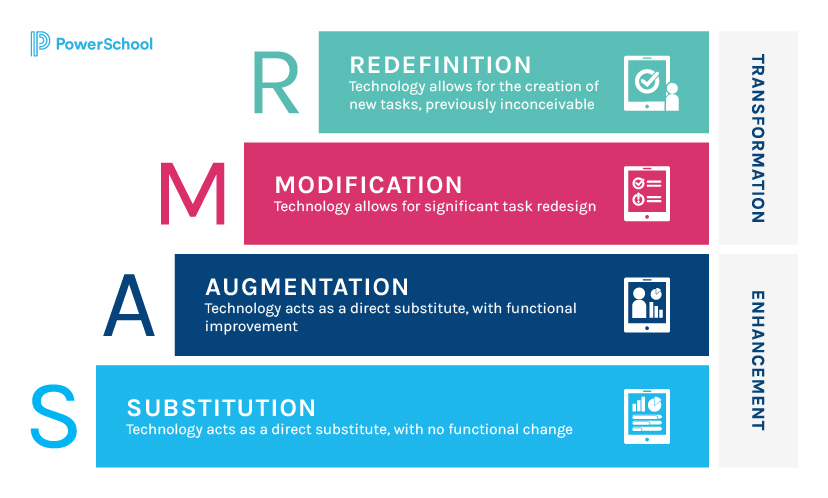SAMR
The Question We All Have An Answer To
What is the role of technology in our classrooms? This is a question that is all too often asked at the wrong time, such as after technology is purchased. Yet it is such a fundamental question that everyone already has an answer to it, whether well-informed or not. A teacher’s answer will always be limited by the teacher’s own comfort level, experiences, and technological skill. This is one reason we need to build capacity in educators.
The better question, though, is this one: How can we use technology to create a better learning environment for students? It’s not the same question. And it is far more relevant than the former question. For one, the answer to the first question for some people could very well have nothing to do with learning. The answer to the second question rightly assumes that technology is for learning, and can enable us to create a better learning environment. Its answers also have many limiting factors. Nevertheless, continuing to answer this question provides a way forward.

Distracting, Enhancing, or Transforming?
There are a number of technology integration models and frameworks that have been offered throughout education. Each offers a lens through which to view the way technology is integrated into learning. The lens you will hear about most in the coming years will be this one: SAMR.
SAMR is an acronym that stands for four levels of use of technology: Substitution, Augmentation, Modification, and Redefinition (refer to the graphic at the top of this page for further explanation of each one of these levels). The SAMR allows us as teachers to look at what we and students are doing with technology in the classroom and to be realistic about how the technology is actually shifting the learning environment. Technology will always change the learning environment in some way–and each type of technology can be used in multiple ways. Whether its use is distracting learners from learning (which is obviously not good), enhancing the learning environment (which is good) or transforming it (which is better) is important to assess because it helps us use technology in a very intentional way.
Here’s SAMR creator Dr. Reuben Puentedura explaining the SAMR Model:
With the unveiling of the Dearborn Schools’ new Technology Plan, you’ll be hearing much more about SAMR and what good technology integration in the classroom actually looks like in the coming years!

Bob Harrison
Instructional Technology Coach
Bob Harrison is the secondary Instructional Technology Coach for the Dearborn Public Schools. He has over 23 years of experience teaching science in high school and middle school, and has supported teachers, administrators, and students as the Tech Coach since 2015.
Bob is a member of ISTE and a participant in multiple online professional learning networks of instructional technology specialists. He tweets regularly from @bharrisonEDU, and co-hosts the podcast ArchiTECHs of Learning, available on Apple Podcasts, Spotify, Google Podcasts, and Stitcher.
Contact Bob at harrisr@dearbornschools.org.